Screen selection for split systems
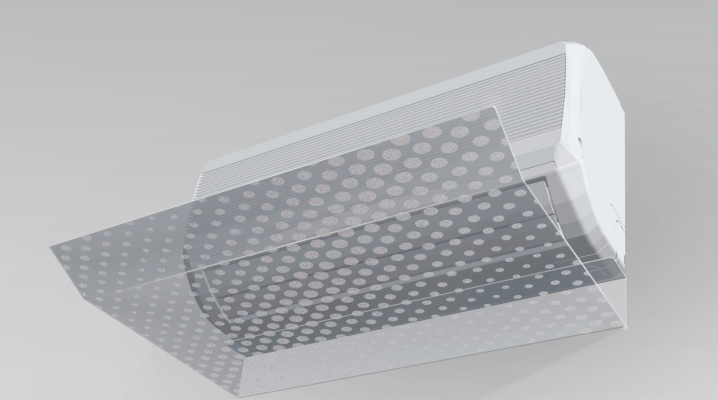
In the southern regions, almost every home has air conditioning. Fleeing from the scorching sun, people hide in cool rooms, where the comfort zone is provided by the operation of the split system. But if during a hot summer in the family someone caught a cold, then, most likely, the reason is in the air conditioner. The protective screen will help maintain health, and we will tell you how to install it in the article.
What is and how does it work?
The indoor unit of a domestic air conditioner is installed under the ceiling. During its operation, cold air rushes downward in a directed stream. It displaces the lighter warm masses, forcing them to rise to the ceiling. If a sofa, an armchair, a computer desk stand in the path of the cold wind, there is a risk to the health of the apartment residents. The way out is simple - you need to install a deflector (screen) under the air conditioner along the flow of cold air, which will redirect it to the ceiling. Then the cold and warm masses mix, and the comfortable air descends without creating a chilling wind.
The baffle plate is a curved-edge plate mounted under the air conditioner. It is mounted with a slope that directs the outgoing flow upward.
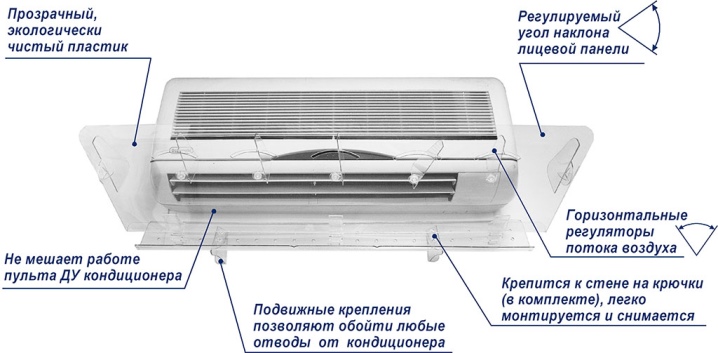
Which split systems are equipped with deflectors?
The screen can be installed not only under the usual household air conditioner - consider all the options for ventilation systems that it suits.
Fan coil unit (ceiling)
Deflectors can also be installed on duct-type climatic devices for centralized air conditioning. To make the air flow upward, reflective canopies are placed near each blower.
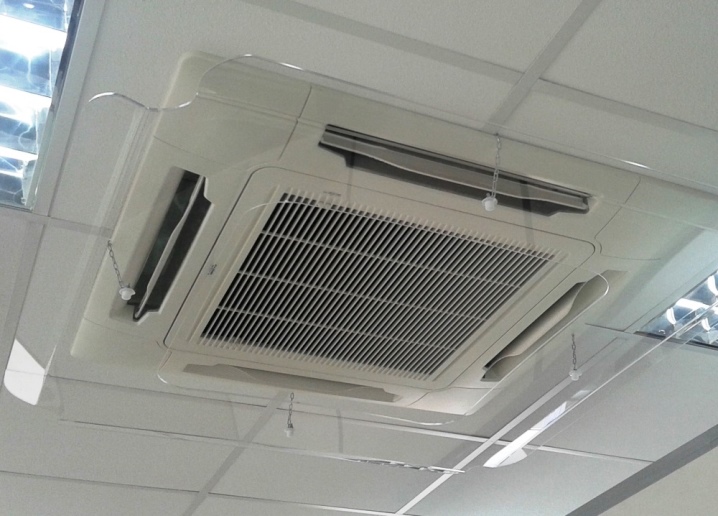
Cassette
The body of the air conditioner is hidden behind the ceiling sheet; only a remote panel with openings for cold air is visible from the outside. A plexiglass screen with one or four plates is installed under it.
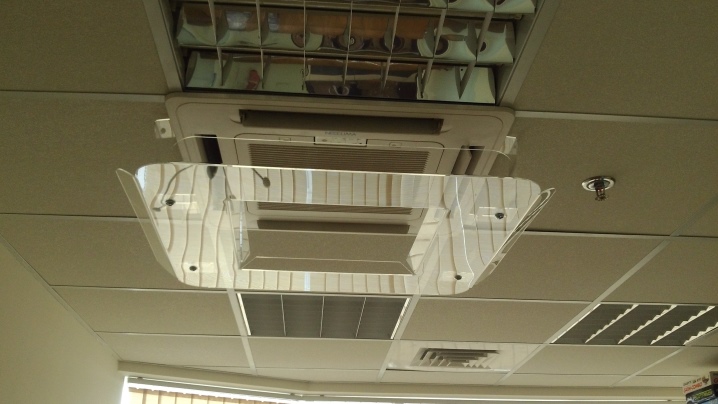
Wall
This type of air conditioners is most common in everyday life, so the industry has adjusted the production of screens for a standard type of equipment. But you can purchase a product for a specific split system or make a reflector yourself.
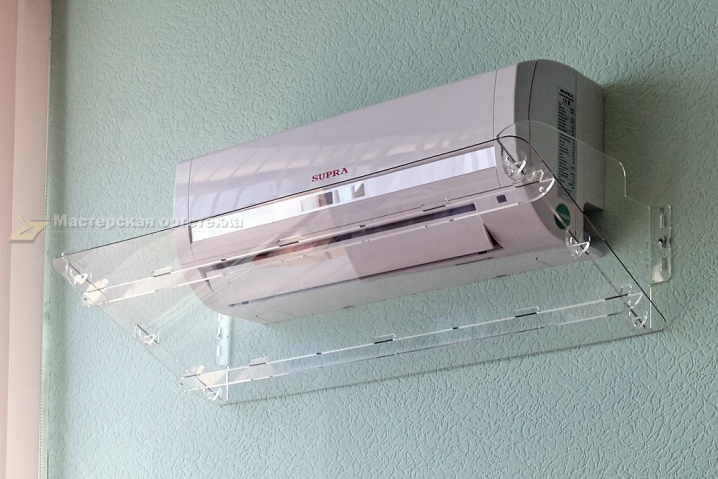
What materials are they made of?
For the manufacture of internal and external deflectors, lightweight materials are used.
- Plastic. In the interior of apartments, it does not look very aesthetically pleasing, but making a reflector out of it with your own hands will not be difficult. When heated, the plastic bends easily, it is mounted to a wall or ceiling.
- Plexiglass. Refers to one of the types of plastic, but is more fragile. Use transparent and color options. Transparent plexiglass is almost invisible against the ceiling background.
- Acrylic. In industry, it is often used for the production of deflectors. It is lightweight and features a wide variety of colors, densities and textures.
- Polycarbonate. Modern, multi-color, non-toxic, very lightweight material. Creates a certain transparency, but at the same time is hundreds of times stronger than glass.
- Cardboard. The most suitable material for homemade products. Easy to bend and cut, takes any shape. It looks rather primitive in the finished version, but if it is pasted over with wallpaper or self-adhesive film, it will take on a more pleasant look.
- Metal. Thin plates made of aluminum, duralumin and other metals are used less often than acrylic or plexiglass.Products made from them are relatively heavy and are suitable only for certain interior styles (techno, loft).
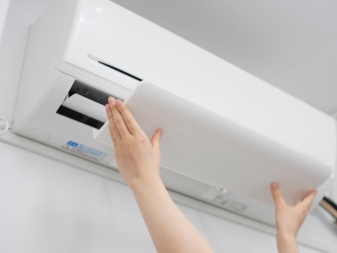
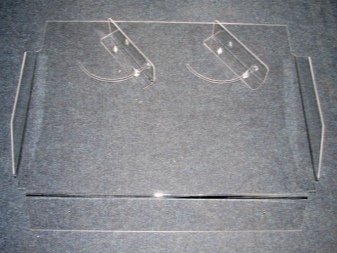
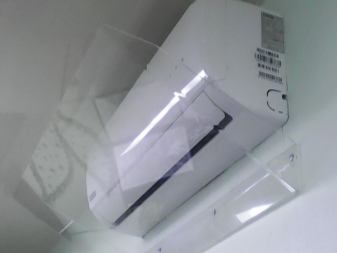

How to do it yourself?
As a material for making a screen at home, plastic, plexiglass or cardboard (about 4 mm thick) are suitable. A thinner sheet creates noise during vibration, and a too dense sheet makes the product heavier. Before cutting out the screen, it is better to make a template out of paper. Next, you should follow the step-by-step instructions.
- The template is applied to plastic or plexiglass and markings are made. They also outline the places of the folds and the location of the screws.
- Then, using a knife or glass cutter, remove the excess parts.
- Gently bend the sides of the screen along the markings. To do this, plexiglass is laid on the table so that its edges remain in weight. With the help of heating with a building hair dryer, they soften the material and carefully bend the plate, trying to maintain an angle of 40–65 degrees.
- After trying on the product and making marks on the wall, the structure is attached to it with self-tapping screws. It is important that the screen is located 30–40 cm from the air conditioner unit, then it will not interfere with the operation of the equipment, and there will be enough space for the air to exit.


It is much easier to make a cardboard deflector at home. The appearance will be inferior to plastic or plexiglass, but a building hairdryer and self-tapping screws will not be needed. The cardboard product can be mounted on double-sided tape. Pasting the screen with any picture you like will help to improve the appearance.
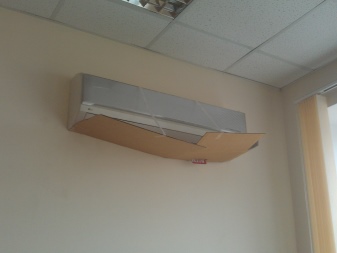
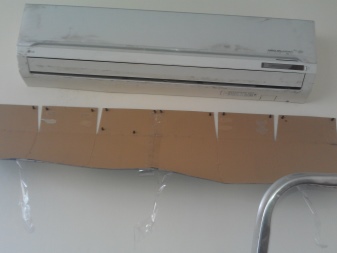
If the family has already felt the negative of a direct cold stream, then it's time to install a deflector, and buying a ready-made one or making it yourself is everyone's personal business.
See below for a master class on making a protective screen.













I highly recommend this protective glass to everyone.
The comment was sent successfully.